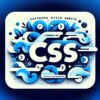PHP for Beginners: Building Your First Web Application

Introduction to PHP for Web Development
PHP, or Hypertext Preprocessor, stands out as one of the most popular server-side scripting languages used in web development today. Its ease of use, efficiency, and compatibility with various databases make it a go-to choice for developers looking to build dynamic web applications. Whether you’re a beginner eager to dive into the world of web development or a seasoned programmer aiming to expand your skillset, mastering PHP is a crucial step on your journey. In this guide, we’ll take you through the process of building your first web application using PHP, covering the basics and providing you with the knowledge to start your development projects.
Understanding PHP and Its Benefits
Before we delve into building a web application, it’s essential to understand what PHP is and why it’s so widely used in web development. PHP scripts are executed on the server, and the result is returned to the browser as plain HTML. This server-side processing allows for dynamic content generation, making PHP ideal for creating interactive and user-centric web applications.
Key Features of PHP:
– Ease of Use: PHP is known for its straightforward syntax, making it accessible for beginners.
– Flexibility: PHP works well with HTML, CSS, JavaScript, and numerous databases like MySQL, making it extremely versatile.
– Open Source: Being open-source, PHP is free to use, modify, and distribute, which has led to a large and active community.
Setting Up Your Development Environment
To start developing with PHP, you need to set up a development environment that includes a server, a PHP processor, and a database. For beginners, installing a software package like XAMPP or MAMP is recommended as they bundle all the necessary components.
Steps to Set Up:
1. Download and install XAMPP or MAMP.
2. Start the Apache server and MySQL database.
3. Create a project folder in the ‘htdocs’ directory within your XAMPP or MAMP installation.
Building Your First Web Application
Now that your environment is ready, let’s start building a simple web application – a personal blog. This project will introduce you to PHP basics, including connecting to a database, retrieving data, and displaying it on a web page.
Step 1: Create a Database
– Use phpMyAdmin to create a new database for your blog.
– Create a table named ‘posts’ with fields for the title, content, and publication date.
Step 2: Connect Your Application to the Database
– Create a new PHP file for database connection.
– Use the ;mysqli_connect()> function to establish a connection to your database.
Step 3: Retrieve and Display Posts
– Write a SQL query to select posts from your database.
– Use PHP to execute the query and loop through the results, displaying each post.
".$row["title"]."
"; echo "".$row["content"]."
"; echo "<small>Posted on: ".$row["pub_date"]."</small>"; } } else { echo "0 results"; } ?>Enhancing Your Web Application
With your basic blog application up and running, you can start exploring more PHP and web development concepts. Integrating user authentication, commenting features, or even a simple CMS can significantly enhance your project. Remember, practice and experimentation are key to mastering web development.
Conclusion
Congratulations on taking your first steps into web development with PHP! Today, you’ve learned the basics of setting up a development environment, connecting to a database, and displaying dynamic content. There’s much more to explore in PHP and web development, so keep learning, experimenting, and building. Remember, the journey of becoming a proficient web developer is continuous, and each project brings new challenges and opportunities for growth.
Happy coding!
—Remember to check the official PHP documentation and join online communities or forums to get support and learn from other developers as you continue on your journey in web development.


